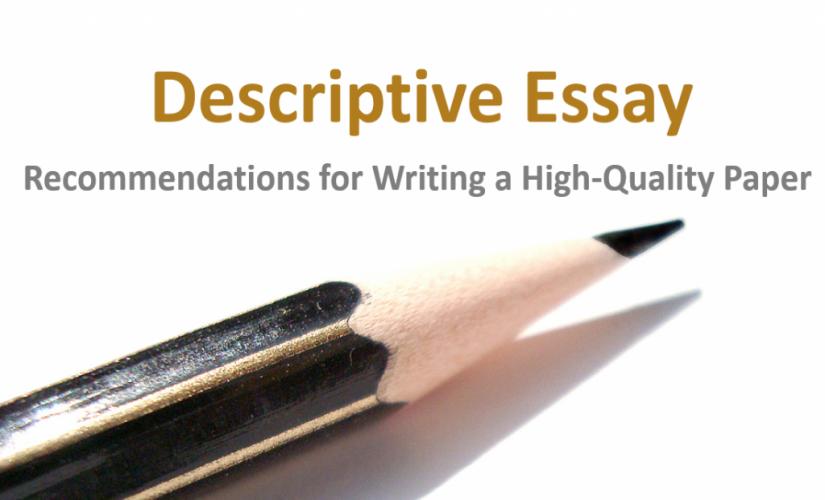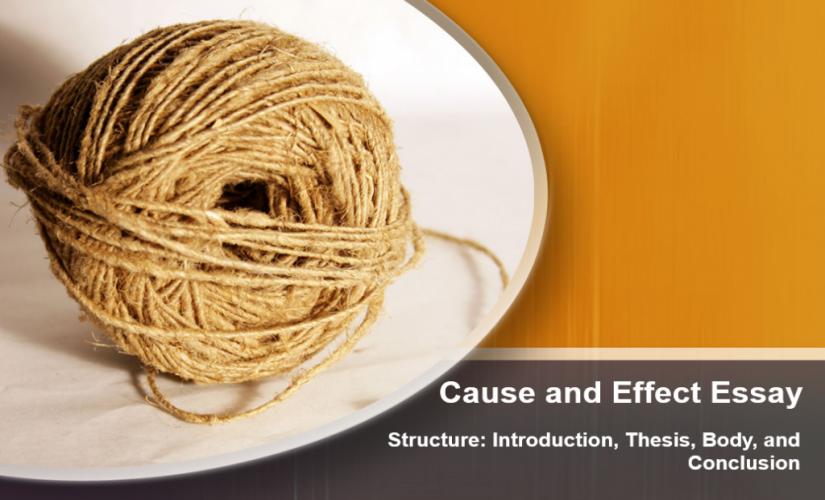Descriptive essays illustrate people, events, situations, thoughts, and feelings. In particular, descriptive writing is a literary technique that uses vivid sensory details and expressive language to create a detailed and impressive portrayal of a specific subject, allowing any reader to visualize and experience it in their minds. As such, a student provides sensory information that enhances an overall quality of a composition in the case of covering a specific theme or object. On the other hand, readers actively participate in a presented text by using imagination and providing specific details. As a result, a descriptive essay answers a ‘what’ question, develops an overall dominant impression, and enhances reflective, analysis, and critical thinking skills. In turn, to start a descriptive essay, people begin with a compelling hook that grabs a reader’s attention, followed by background information to set a specific context, and conclude an introduction with a clear thesis statement.
What Is a Descriptive Essay and Its Purpose
According to its definition, a descriptive essay is a type of academic writing that provides a detailed description of an object, subject, person, place, experience, emotion, situation, or anything else under discussion. The main purpose of writing a descriptive essay is to paint a particular picture on a specific topic in a reader’s mind using vivid details and figurative language (Rollins, 2022). By employing literary techniques, such as metaphors, similes, and adjectives, writers aim to evoke readers’ senses and emotions and allow them to visualize and feel a subject matter as if they were experiencing it firsthand. Moreover, such compositions not only hone authors’ observational and expressive skills but also engage a sense of people’s imagination, making a reading experience more engaging and memorable (Stone, 2021). As such, illustrative papers often go beyond mere physical description, incorporating writer’s personal impressions, feelings, and interpretations. In turn, the length of a descriptive essay depends on academic levels, specific course requirements, and topic complexities, while general guidelines are:
High School
- Length: 2-4 pages
- Word Count: 500-1,000 words
College
- Length: 3-6 pages
- Word Count: 750-1,500 words
University
- Length: 4-8 pages
- Word Count: 1,000-2,000 words
Master’s
- Length: 6-12 pages
- Word Count: 1,500-3,000 words
Ph.D.
- Length: 10-20 pages (or more, depending on a depth of research required)
- Word Count: 2,500-5,000 words (or more)

Format
| Section | Content | Details |
|---|---|---|
| Title | A descriptive and engaging title. | Reflect an actual essence of an essay. |
| Use vivid language to hint at a subject matter. | ||
| Introduction | Introduce a chosen topic and set a positive tone. | Hook: Start with a compelling sentence in a form of fact, quote, or anecdote. |
| Background information: Provide a brief context. | ||
| Thesis statement: State a main focus and purpose of an essay. | ||
| Body Paragraph 1 | Describe a first main aspect or detail. | Topic sentence: Introduce a main idea of a paragraph. |
| Sensory details: Use vivid imagery (sight, sound, smell, taste, touch). | ||
| Examples and descriptions: Include specific details and examples. | ||
| Personal reflection: Present feelings or thoughts while talking about this aspect. | ||
| Body Paragraph 2 | Describe a second main aspect or detail. | Topic sentence: Introduce a main idea of a paragraph. |
| Sensory details: Use vivid imagery (sight, sound, smell, taste, touch). | ||
| Examples and descriptions: Include specific details and examples. | ||
| Personal reflection: Present feelings or thoughts while talking this aspect. | ||
| Body Paragraph 3 | Describe a third main aspect or detail. | Topic sentence: Introduce a main idea of a paragraph. |
| Sensory details: Use vivid imagery (sight, sound, smell, taste, touch). | ||
| Examples and descriptions: Include specific details and examples. | ||
| Personal reflection: Present feelings or thoughts while talking about this aspect. | ||
| Body Paragraphs 4+ (If needed) | Additional aspects or details. | Continue with a similar structure as above for additional aspects or details. |
| Ensure each paragraph focuses on a distinct aspect. | ||
| Conclusion | A summary and reflection on an overall description. | Restate thesis: Summarize an essay’s main focus. |
| Recap key points: Briefly mention main aspects described. | ||
| Final thoughts: Talk about personal insights or reflections on a subject’s overall significance. | ||
| Closing statement: End with a memorable sentence to conclude a paper. | ||
| List of References (Optional) | A list of sources used for writing a descriptive essay. | Cite all sources used in a paper and format citation entries according to MLA, APA, Chicago/Turabian, or Harvard referencing rules. |
Note: Some sections of a descriptive essay can be added, deleted, or combined with each other, and the number of paragraphs depends on what is needed according to assignment requirements. For example, the five parts of a descriptive essay are a clear introduction, a detailed thesis statement, impressive body paragraphs, captivating sensory details, and a logical conclusion (Humble, 2023). In turn, a descriptive style of writing uses detailed sensory language and figurative expressions to create vivid images and evoke emotions, allowing readers to fully experience and visualize a particular subject. Finally, a particular example is:
What Question
A descriptive essay provides information to a question that answers ‘what.’ For instance, students need to provide information on what a target audience needs to know (Rollins, 2022). In this case, they explain specific settings, events, and backgrounds of objects or situations. Besides, scholars may explain unique natures of subjects. On the other hand, readers must understand an essence of ‘what’ and its content. In turn, some examples of sentence starters for beginning a descriptive essay include:
- A particular moment I stepped into a lush garden, I was immediately captivated by … .
- As I looked at majestic mountains toward me, a sense of admiration arose in me as I noticed … .
- A unique scent of freshly baked bread filled the air around me, mingling with a faint aroma of … .
- With a gentle breeze rustling through a tall grass, a peaceful meadow seemed to … .
- A great sound of the crashing waves against a rocky shore created a symphony that … .
- In the evening, a quiet lake reflected different colors of … .
- Surrounded by tall trees, rocky mountains, and chirping birds, this forest felt like a world of … .
- A specific texture of an old, worn leather-bound book in my hands was rough and … .
- As I felt a taste of rich, creamy chocolate, I could not help but think of … .
- A sense of calm caught me as I sat by a quiet river, watching the water flow slowly over … .
Steps on How to Write a Descriptive Essay
To write a descriptive essay, people use vivid sensory details, figurative language, and well-organized structure to create an impressive and engaging portrayal of their subjects.
- Choose a Descriptive Topic: Select a subject that you are passionate about and that lends itself to a vivid description.
- Brainstorm and Outline: List sensory details and organize them into an outline for a structured approach.
- Provide a Strong Thesis Statement: Develop a clear thesis statement that sets your paper’s particular focus and purpose.
- Present an Introduction: Begin with a hook, provide background information, and end with your thesis statement.
- Organize Body Paragraphs: Focus each paragraph on a single aspect of your topic, using rich sensory details and personal reflections.
- Show, Don’t Tell: Use illustrative language and sensory details to paint a vivid picture for readers.
- Use Varied Sentence Structures: Mix short and long sentences to keep readers engaged and ensure a smooth flow of ideas.
- End With a Conclusion: Restate your thesis, summarize key points, and reflect on a topic’s significance.
- Revise and Edit: Review for clarity, coherence, and vividness, and correct any grammatical errors.
- Seek Feedback and Finalize: Get feedback from others, make necessary revisions, and ensure a paper is polished and error-free before submitting.
Dominant Impression
A descriptive essay is unique since it creates a dominant impression. Basically, one can excitingly describe an object. For example, students should make a careful choice of words to influence an overall mood of a whole paper (West et al., 2019). Moreover, they may use thesaurus and dictionary to identify a variety of words with similar meanings. In turn, successful scholars develop papers that have unity and variety. Besides, illustrative writing should be focused and thought-provoking. Hence, a particular choice of words and organization of phrases in illustrative essays gives it a dominant impression.
Reflective Skills
A descriptive essay is essential since it enhances reflective skills among learners. For example, one must reflect on a presentation of a specific work under analysis (Stone, 2021). In this case, students have to decide what to do with the information gathered about a particular subject. Further on, people should only use relevant information from reputable sources to complete a paper (Sun & Soden, 2021). As such, wise learners look back on the details that did not work in the first place and improve them. Besides, a primary focus is to develop a harmonized portrayal of a discussion. Therefore, a particular process of writing detailed essays shapes one’s reflective skills.
Analytical Skills
Organizing a descriptive essay enhances one’s analytical skills. Basically, students analyze some qualities and features of a specific theme. For example, to start descriptive writing, people begin with a compelling hook that captures a reader’s attention and sets a unique scene by introducing vivid sensory details and a clear focus on a specific subject (Rollins, 2022). In this case, one must give the most compelling description of a subject under analysis. Moreover, authors should classify information to achieve a logical flow. Therefore, detailed papers encourage learners to develop investigative skills.
Critical Thinking Skills
Writing a descriptive essay improves critical thinking skills. For example, authors must apply judgemental thinking when gathering the most appropriate information (Grogan, 2020). In this case, one must decide on the details that fit well in a paper. Further on, compelling papers have brief details that reveal intrinsic features of objects under analysis. Practically, one should develop several drafts to ensure a complete composition encompasses only relevant facts. Thus, writing detailed essays improves one’s ability to think critically.
What to Include
| Example | Description |
|---|---|
| Sensory Details | Use vivid descriptions involving sight, sound, smell, taste, and touch to create a full sensory experience. |
| Metaphors and Similes | Use comparisons to add depth and understanding, such as “Her smile was as bright as the sun.” |
| Specific Details | Include detailed information about a specific subject to paint a precise picture for readers. |
| Emotional Responses | Share personal feelings and emotions to connect with readers on an emotional level. |
| Personification | Give human characteristics to inanimate objects to create a more engaging description. |
| Vivid Adjectives | Use illustrative adjectives to enhance a sense of imagery, such as “luminous,” “whispering,” or “fragrant.” |
| Active Verbs | Use dynamic verbs to convey action and movement, making a particular description more lively. |
| Imagery | Create strong visual images using detailed descriptions to help readers to visualize a discussed scene. |
| Dialogue | Include conversations or quotes to bring characters to life and add realism. |
| Setting | Describe a specific environment or background to provide context and set a scene. |
| Character | Provide detailed descriptions of characters, including physical appearance and personality traits. |
| Mood and Atmosphere | Set a positive tone of a paper by describing an overall feeling or mood of a unique scene. |
| Figurative Language | Use figures of speech, such as hyperbole, alliteration, or onomatopoeia, to add literary aspects. |
| Structure and Organization | Organize a descriptive essay logically with a clear introduction, detailed body paragraphs, and a final conclusion. |
| Personal Reflection | Include personal thoughts, reflections, and interpretations to add depth to a particular description. |
Descriptive vs. Formal Writing
Writing skills are essential in achieving academic success. Basically, students should understand different types of writing to ensure they score better grades. In this case, some common examples of writing include formal and descriptive. Firstly, formal or scholarly writing is less personal and appropriate for educational and professional purposes (Stone, 2021). An academic format follows unique rules that enhance an overall clarity and quality of a specific message delivered. Then, descriptive language provides illustrations of people, places, events, ideas, and feelings (Humble, 2023). In principle, descriptions provide sensory information that makes a whole composition interesting. Finally, detailed compositions illustrate events and objects to create a dominant impression but becomes formal when written for educational purposes since one must follow specific rules that enhance clarity and quality.
Features of Formal Writing
A formal format follows specific rules to remove ambiguity and enhance communication compared to descriptive writing. For example, formal language is objective, while people need to use appropriate terms (Stone, 2021). In essence, this type of writing states main points confidently and provides evidence to support arguments. Further on, scholarly standards dictate to avoid emotive punctuation (Humble, 2023). Basically, formal language does not use contractions or abbreviations but covers full words. Moreover, abbreviations must be spelled out in full to enhance an overall clarity of a presented content. As such, an academic format avoids words, like “I,” “we,” and “you,” and relies on a third person (Rollins, 2022). In turn, all phrases should use present tense to enhance clarity. Thus, formal writing uses clear rules that improve a correct communication of ideas.

Features of Descriptive Writing
A descriptive format is one of the writing styles that cover objects and develop an overall impression. For instance, an informative speech seeks to express a unique idea or theme to a target audience (Rollins, 2022). In principle, the five characteristics of descriptive writing are vivid sensory details, figurative language, precise vocabulary, emotional resonance, and a clear focus on creating a vivid picture for readers. Basically, descriptions create a literary texture of an overall impression of a story (Humble, 2023). Along these lines, such an impression helps to show a target audience a central idea through various senses. For example, a detailed essay includes several vivid sensory details that appeal to a reader (Stone, 2021). In this case, it helps a particular audience to imagine or develop feelings toward an object or an event. Besides, this form of language utilizes similes, metaphors, and imagery to explain events or objects. Hence, a detailed essay provides clear explanations that influence readers’ thoughts.
Main Similarities
Descriptive writing utilizes some rules to achieve an academic objective. Eventually, illustrative essays can utilize typical standards used in formal language (Rollins, 2022). As such, students use full words, use a third-person perspective, present correct tenses, and avoid contractions when organizing detailed papers. In turn, they can use these traits in descriptive format to make it formal. For instance, expressive language can utilize various rules to meet academic standards (Humble, 2023). As such, descriptive and formal essays bear similar traits. Therefore, detailed and academic formats can take the same characteristics.
Key Differences
Descriptive and scholarly rules have some differences and similarities. Firstly, official writing utilizes specific rules to achieve clarity (Rollins, 2022). In this case, people must avoid a particular use of contraction or first-person language in formal papers. Besides, such a composition relies on present tenses to make arguments clear. On the other hand, descriptive essays include illustrations of objects or events (Humble, 2023). Moreover, a primary focus of descriptions is to develop an overall impression of a target audience through various meanings. As a result, students write detailed essays for academic purposes, and they must observe specific rules (Stone, 2021). In turn, they should not forget that scholarly and illustrative papers bear similar traits.
Common Mistakes
- Lack of Focus: Failing to clearly define a specific subject or main point of an essay can lead to a confusing narrative.
- Overuse of Adjectives: Using too many adjectives can overwhelm readers and lower an impact of descriptions.
- Insufficient Sensory Details: Neglecting to engage all five senses can result in an unengaging composition.
- Telling Instead of Showing: Simply stating facts rather than using vivid imagery and sensory details can make a paper not impressive.
- Poor Organization: A lack of clear structure can make a document difficult to follow and reduce its effectiveness.
- Repetition: Repeating same descriptions or phrases can make a text monotonous and boring.
- Ignoring a Reader’s Perspective: Failing to consider how readers will perceive descriptions can lead to confusion.
- Lack of Personal Reflection: Not including personal insights or emotions can make a written composition impersonal.
- Overly Complex Language: Using unnecessarily complex words and sentences can hinder readability and detract from a power of details.
- Grammatical Errors: Mistakes in grammar, spelling, and punctuation can distract readers and undermine a paper’s credibility.
Summing Up
A descriptive essay typically responds to a ‘what’ question. In essence, learners need to explain what objects, subjects, or themes are. Moreover, these papers are unique since they develop an overall dominant impression. In this case, prudent students use words that are interesting and thought-provoking. Detailed essays also allow people to develop different skills during a particular writing process. Besides, a method of gathering relevant information, choice of words, and development of phrases relies on one’s ability to think critically. As a result, descriptive writing allows learners to analyze data and reflect on main features and qualities of a specific subject.
References
Grogan, K. E. (2020). Writing science: What makes scientific writing hard and how to make it easier. The Bulletin of the Ecological Society of America, 102(1), 1–8. https://doi.org/10.1002/bes2.1800
Humble, R. K. (2023). The humble essay: A readable introduction to college writing. Chemeketa Press.
Rollins, B. V. (2022). How to write an essay: What is a descriptive essay? & Writing a descriptive essay. Classroom Complete Press.
Stone, E. A. (2021). The better college essay: From start to finish. City Limits Publishing.
Sun, Q., & Soden, B. (2021). The representation of source use in academic writing textbooks. ELT Journal, 76(4), 497–507. https://doi.org/10.1093/elt/ccab058
West, H., Malcolm, G., Keywood, S., & Hill, J. (2019). Writing a successful essay. Journal of Geography in Higher Education, 43(4), 609–617. https://doi.org/10.1080/03098265.2019.1655720


